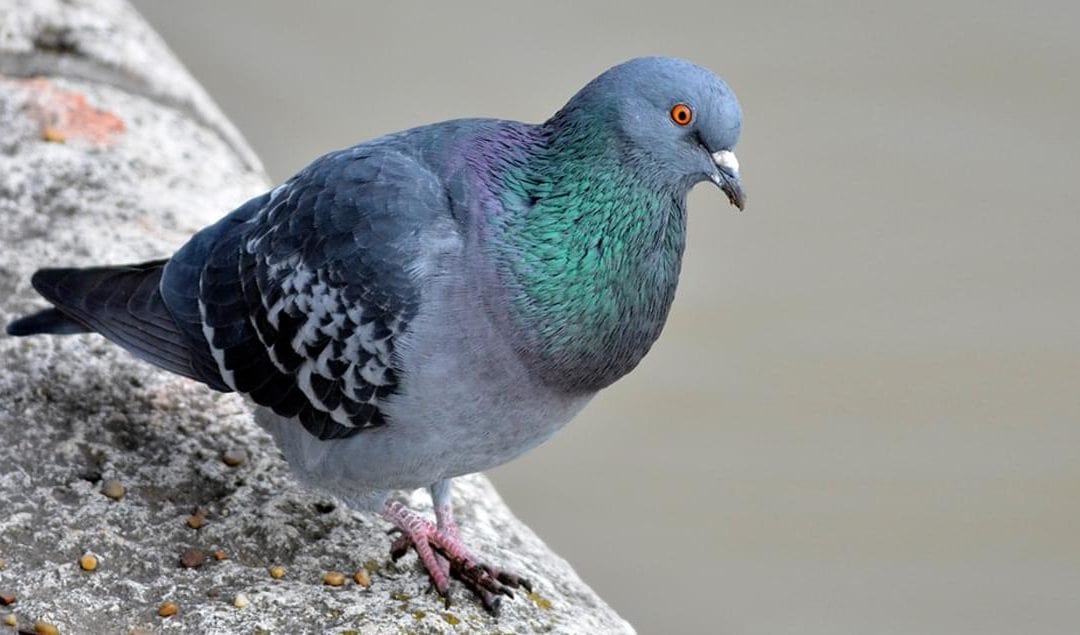
by Pigeon Patrol | Sep 7, 2023 | 4-S Gel Bird repellent, Animal Deterrent Products, Bird Deterrent Products, Bird Law, Bird Netting, Bird Spikes
The development of cities and urban sprawl has made room for wildlife inhabiting human environments. Among birds, feral pigeons (Columba livia domestica) are often present in large numbers in the cities. Problems related to pigeon occurrence result in economic loss and health issues for humans. There are different methods of controlling pigeon populations in urban areas. In this study, we compared three techniques that can be used for pigeon pest control. In two urban industrial sites in Hungary, we used trapping, falconry (in both Study Area 1 and 2) and mist-netting (only in Study Area 2) to remove pigeons. We compared the effectiveness and limitations of each method. Our results show that over 105 days in Study Area 1, we managed to remove 173 individual pigeons. We did not find a significant difference between the effectiveness of trapping or falconry. In Study Area 2, the overall number of pigeons removed was 1412 over a period of 150 days. There, we managed to catch significantly more birds by netting than by trapping or falconry, but the latter two did not differ statistically. We recommend a combination of techniques for pigeon control. Mist-netting can be the most effective way for direct pigeon removal, whereas trapping is an easier but less efficient method to catch pigeons. Falconry is the least efficient in pigeon catching and requires the most investments, but the bird of prey may chase the pigeons away for a short time.
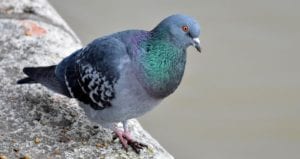
Source
Pigeon Patrol Products & Services is the leading manufacturer and distributor or bird deterrent (control) products in Canada. Pigeon Patrol products have solved pest bird problems in industrial, commercial, and residential settings since 2000, by using safe and humane bird
deterrents with only bird and animal friendly solutions. At Pigeon Patrol, we manufacture and offer a variety of bird deterrents, ranging from Ultra-flex Bird Spikes with UV protection, Bird Netting, 4-S Bird Gel and the best Ultrasonic and audible sound devices on the market today.
Voted Best Canadian wholesaler for Bird Deterrent products ten years in a row.
Contact us at 1 877-4-NO-BIRD,(604) 585-9279 or visit our website at www.pigeonpatrol.ca
Pigeon/Pigeon Patrol / Pigeons Roosing / Vancouver Pigeon Control / Bird Spikes / Bird Control / Bird Deterrent / PIgeon Deterrent / Surrey Pigeon Control / Pest / Seagull deterrent / Vancouver Pigeon Blog / Birds Inside Home / Pigeons in the cities / Ice Pigeons / What to do about pigeons / sparrows, Damage by Sparrows, How to Keep Raccoons Away, Why Are Raccoons Considered Pests / De-fence / Pigeon Nesting / Bird Droppings / Pigeon Dropping / woodpecker control / Professional Bird Control Company / Keep The Birds Away / Birds/rats/seagull/pigeon/woodpecker/dove/sparrow/pidgeon control/pidgeon problem/pidgeon control/flying rats/pigeon problems/ bird netting/bird gel/bird spray/bird nails/bird guard

by Pigeon Patrol | Jul 26, 2023 | 4-S Gel Bird repellent, Animal Deterrent Products, Bird Deterrent Products, Bird Law, Bird Netting, Bird Spikes, Columbidae, Doves
How to Deter Birds From the Garden
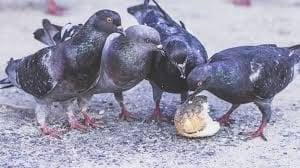
Birds are not picky eaters. They can feed on a number of things: seeds, grains, fruit, breadcrumbs, worms, and more.
Bird control is a hard job, especially if you have a vegetable garden. You’d want to keep birds as far away as possible. Even though it’s not easy, there are a few things you can do.
- Make a scarecrow or use decoy hawks and owls. Also, fake snakes could scare some of the birds.
- Use old CDs as shiny reflective objects to scare the birds. Hang a few of them every couple of meters around your garden.
- Buy or make bird nettings from cord or wire to protect your crops.
- Plants to distract them. You want to keep your crops intact and you’ve lost all hope of keeping the birds away? You can distract them by planting other seductive plants away from your vegetables. Plants like buckwheat, sunflowers, or some berries can be used to attract pigeons and other birds to the opposite side of your garden.
How to Keep Pigeons Away From Bird Feeders
Pigeons are a typical example of a bully bird that doesn’t allow smaller birds to get food. They are larger than most birds you can find in urban areas and this gives them some advantage in the race to get the food people leave behind.
You can keep pigeons and other bully birds away from your bird feeders by making it hard for them to reach it. How? By enclosing the bird feeder with hardware cloth with openings big enough so only smaller birds can get through and feed (5cm should be more than enough).
There are caged-in trays or tube bird feeders sold in garden or hardware stores you can purchase. The tray or tube is placed several centimetres inside of the cage and it makes it difficult for larger bully birds to eat the seeds.
Some bird species, like pigeons, the European starling, house sparrows, feed on the ground. If you remove all food sources from the ground and make a hanging bird feeder under a small shelter, they may get scared to get under the cover. With the lack of food, they will soon stop coming.
How to Get Rid of Pigeons With Poison
Poisoning pigeons and other birds is not recommended. There’s no need to kill the birds. You can simply take some measures to keep them away from your home or business building. A dead pigeon, filled with poison, laying somewhere in your garden might cause you more problems than a live one. Plus, you should consider the chance of poisoning other animals alongside the pigeons. Refrain from using poison as a bird control method, please.
How to Get Rid of Pigeons in Your Garden With Sound
Sounds can prove to be one of the most effective ways to keep birds away. You will need to invest some money to do it the right way but it will be worth it. There are a number of sounds that can do the trick.
Audible repellers produce frightening bird sounds that scare pigeons and other birds. There are different sounds – distressed cries of birds, shrieks of predator birds. The devices can be bought in most gardening stores.
Ultrasonic repellers emit high-frequency sounds that people cannot hear. The sounds are at a specific frequency targeted at birds.
How to Get Rid of Pigeons From Trees
Gather aluminium plates, mirrors, and other shiny objects. Hang them on your trees and they’ll create movements and reflect the sunlight. Thus they will scare off the pigeons and other birds from roosting on your trees.
Put a predator bird statue on the tree to scare the pigeons off. Most professional exterminators rely on this method as well.
Wind chimes can also scare pigeons away with the sound and movement they make, but if the pigeons get used to them they will not hesitate to roost on your trees.
Natural Pigeon Repellents and Control Methods
You have to be careful with the homemade repellents. Birds, especially pigeons are smart animals and can see through your scarecrows and tricks.
Homemade pigeon repellents and other repelling methods should be combined with preventive methods for full effect and protection.
Other natural ways to deal with bird control
Remove food and water sources. Keeping your property clean from seeds, grains and other food remains is a convenient way to have birds and pigeons skip your home and go to your neighbour’s’ yard. This can be done by regularly sweeping floors, keeping your garbage in the garbage can with a closed lid on it.
Gardens should be protected as well, either with decoy predator birds statues, sprinklers, sound repellents, or nets.
Make sure you don’t leave standing water anywhere around your home.
Removing the nest is essential because you are putting your home at risk of getting infested with bird mites.
Homemade Pigeon Repellents
As mentioned above, there are a number of bird repellents that can get the job done. But if you wish to deal with the issue without having to put a fake owl or spikes on your roof, you can try to make some homemade repellents.
1) Repel pigeons with honey – Applying a thin layer of honey to your roof or balcony will inconvenience birds and they won’t roost there. Honey’s stickiness will keep them away as birds do not like sticky surfaces. You can use other sticky products as well. You may have to reapply the sticky substance from time to time because it will wear off.
2) Hose the birds. You can instal automatic sprinkles on your roof or balcony to spray them when they land. Or you can do the work when you notice them. Hosing them a couple of times should be enough to teach them a lesson and keep them away.
3) Spicy pigeon repellent
Pigeons and other birds do not like spices. Which makes it a fantastic natural repellent for all kinds of birds.
4) Pepper powder can be used to repel pigeons from your balcony and roof. Sprinkle more of it on their roosting places and in other places they may roost. You can use black pepper, cayenne pepper or cinnamon powder to keep the pigeons off your property. You will have to reapply it after rainy or windy days.
5) Chilli powder is another spicy repellent that you can use. Throw chilli solution in the birds’ roosting places and watch how they stop coming back. Reapplying it may be also necessary after windy and rainy days. The chilli is also unpleasant to the pigeons and will drive them away from your home.
Take measures to keep birds away from your home now or call an expert to do it for you.
Source
Pigeon Patrol Products & Services is the leading manufacturer and distributor or bird deterrent (control) products in Canada. Pigeon Patrol products have solved pest bird problems in industrial, commercial, and residential settings since 2000, by using safe and humane bird
deterrents with only bird and animal friendly solutions. At Pigeon Patrol, we manufacture and offer a variety of bird deterrents, ranging from Ultra-flex Bird Spikes with UV protection, Bird Netting, 4-S Bird Gel and the best Ultrasonic and audible sound devices on the market today.
Voted Best Canadian wholesaler for Bird Deterrent products ten years in a row.
Contact us at 1 877-4-NO-BIRD,(604) 585-9279 or visit our website at www.pigeonpatrol.ca
Pigeon/Pigeon Patrol / Pigeons Roosing / Vancouver Pigeon Control / Bird Spikes / Bird Control / Bird Deterrent / PIgeon Deterrent / Surrey Pigeon Control / Pest / Seagull deterrent / Vancouver Pigeon Blog / Birds Inside Home / Pigeons in the cities / Ice Pigeons / What to do about pigeons / sparrows, Damage by Sparrows, How to Keep Raccoons Away, Why Are Raccoons Considered Pests / De-fence / Pigeon Nesting / Bird Droppings / Pigeon Dropping / woodpecker control / Professional Bird Control Company / Keep The Birds Away / Birds/rats/seagull/pigeon/woodpecker/dove/sparrow/pidgeon control/pidgeon problem/pidgeon control/flying rats/pigeon problems/ bird netting/bird gel/bird spray/bird nails/bird guard
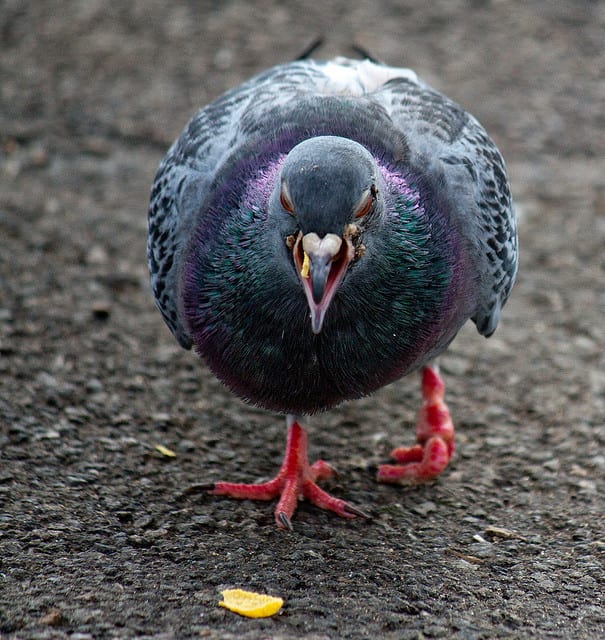
by Pigeon Patrol | Jul 20, 2023 | 4-S Gel Bird repellent, Animal Deterrent Products, Bird Deterrent Products, Bird Law, Bird Netting, Bird Spikes
We trap, poison or push these nuisance birds away from bridges and the ledges of downtown buildings, but perhaps pigeons are just misunderstood. At least, that’s what a group of university researchers think. They’re testing a new, er, old approach, really, to the problem of pigeon poop.
By this time next year, they’ll have at least one attractive stone “pigeon cote” to house the birds, attracting them to one place in order to concentrate the poop and use it as fertilizer. It works with nature, rather than controlling it, and aims to restore an ancient, mutually-beneficial relationship that modern society simply forgot.
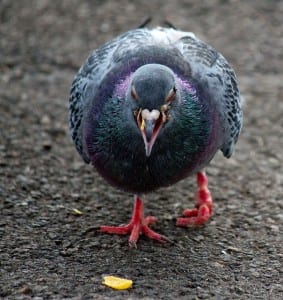
Yuck. Yes, I know. But intriguing as well. As city council heads into a week full of tough environmental decisions, I wonder if there’s a broader wisdom here that can help.
But first, these pigeons.
Pigeons really are the flying kings of poop. One study found they poop up to 40 times a day, although English researcher Kristine Kowalchuk (’12 PhD) would put that closer to 10, based on what she saw from a rescued baby pigeon.
She was walking out of the Art Gallery of Alberta one afternoon in the spring of 2016 when she found the tiny bird sitting quietly in the gutter. She picked it up, carried it home and raised it in her spare room until it was too big and messy to keep any longer.
That’s what got her thinking about pigeons, and the many references to squab (young pigeon) and the excellence of pigeon droppings as fertilizer she found littered throughout 17th century cookbooks and farming manuals during her English PhD.
It turns out farmers across Europe and North Africa would create large houses for free-ranging pigeons in fields or above their homes so that the birds would roost in one spot. That way both the young birds and poop could be harvested.
Now Kowalchuk, along with UAlberta professors Debra Davidson, an environmental sociologist, Howard Nye (Philosophy) and Aidan Rowe (Art & Design) using a $7,500 grant to build their own pigeon cote. It’s being built on a farm near Camrose because none of the five organizations with pigeon problems they contacted here in the city would entertain the idea.
They’re hoping a year observing the cote in action will change attitudes.
“We have so many misconceptions and cultural bias,” says Kowalchuk, citing studies measuring the risk of getting sick from being around the poop as tiny, akin to getting sick from a pet dog or breaking a leg from slipping on a dandelion. The person shovelling it out periodically would simply wear a mask.
Plus, the cote itself doesn’t increase populations; only feeding them does that, she says. “Our parks and flower beds could all benefit. Another way of looking at pigeons is entirely possible.”
I love the simplicity of Kowalchuk’s approach. I love the way it turns our pigeon problem on its head, resets a relationship.
That’s why I’ll be pondering pigeons as council wrestles with the environment file next week: first with its greenhouse gas reduction targets on Tuesday, then with waste management Thursday and a proposed ban on single-use plastics.
Because pigeon control isn’t the only area where humans expect we can control and build our way out of a mess with technology. We pave large parking lots and wonder why we have flooding. We cut trees and seem puzzled at the heat and dust of the city. We set out one big bag of all our trash and wonder why garbage fees keep rising.
I don’t think a single-use plastic ban will help much. It’s too narrow and complicated to administer. I’d rather see small fees for bags at the grocery store combined with measures that actually change a culture – like neighbourhood-level composting with free soil in exchange for yard waste drop-offs.
As for curbing carbon emissions, city officials have a long list of actions needed, from incentivizing electric cars to expanding district energy. But I don’t think technology is enough to solve this issue, not without a cultural change. Perhaps the lessons of pigeon poop will help there, too.
Source
Pigeon Patrol Products & Services is the leading manufacturer and distributor or bird deterrent (control) products in Canada. Pigeon Patrol products have solved pest bird problems in industrial, commercial, and residential settings since 2000, by using safe and humane bird
deterrents with only bird and animal friendly solutions. At Pigeon Patrol, we manufacture and offer a variety of bird deterrents, ranging from Ultra-flex Bird Spikes with UV protection, Bird Netting, 4-S Bird Gel and the best Ultrasonic and audible sound devices on the market today.
Voted Best Canadian wholesaler for Bird Deterrent products ten years in a row.
Contact us at 1 877-4-NO-BIRD,(604) 585-9279 or visit our website at www.pigeonpatrol.ca
Pigeon/Pigeon Patrol / Pigeons Roosing / Vancouver Pigeon Control / Bird Spikes / Bird Control / Bird Deterrent / PIgeon Deterrent / Surrey Pigeon Control / Pest / Seagull deterrent / Vancouver Pigeon Blog / Birds Inside Home / Pigeons in the cities / Ice Pigeons / What to do about pigeons / sparrows, Damage by Sparrows, How to Keep Raccoons Away, Why Are Raccoons Considered Pests / De-fence / Pigeon Nesting / Bird Droppings / Pigeon Dropping / woodpecker control / Professional Bird Control Company / Keep The Birds Away / Birds/rats/seagull/pigeon/woodpecker/dove/sparrow/pidgeon control/pidgeon problem/pidgeon control/flying rats/pigeon problems/ bird netting/bird gel/bird spray/bird nails/bird guard
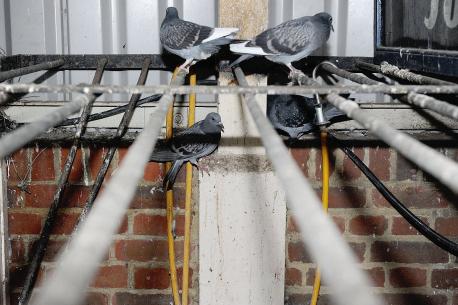
by Pigeon Patrol | Jul 20, 2023 | 4-S Gel Bird repellent, Animal Deterrent Products, Bird Deterrent Products, Bird Law, Bird Netting, Bird Spikes
Wageningen University released the results of research on a poultry farm that suffered visits from wild waterfowl, which are a source of the avian influenza virus (AIV).
The study revealed that when the laser was in use, a 99.7% wild bird reduction rate was recorded.
Wageningen Bioveterinary Research (WBVR), part of the Wageningen University, previously discovered a mallard, which is a species identified as a high-risk bird for carrying the avian flu virus, was frequenting a free-range area of a poultry farm from sunset to sunrise. This was notable from November to February, the typical bird migration period and when the avian influenza virus is more prevalent. Therefore, chickens in the free-range area had increased exposure to the virus, due to the regular occurrence of wild waterfowl during this time.
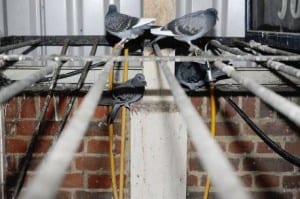
The project leader of the study, and epidemiologist at WBVR, Armin Elbers, explained: “Several mallards came to visit the range between sunset and sunrise daily. They look for food and swim in puddles of water that are formed during the winter period by abundant rainfall in the range. While swimming in the puddles, the ducks may defecate. During the day, the chickens drink the same water, as we saw in the video camera images. In the cold winter period, the bird flu virus can survive in such water for a long time.”
Wageningen University & Research did a study with the laser bird deterrent manufactured by Bird Control Group. This study explored whether the laser system could be a successful biosecurity measure to prevent avian influenza viruses from spreading from wild birds to domestic animals. The laser bird deterrent system has been used worldwide in a variety of applications to reduce bird presence. The system spooks birds away by projecting a green laser beam across areas where birds aggregate. The birds see the green laser beam as a solid object and instinctively perceive it as a physical threat, causing them to flee the area immediately.
The WBVR study took place in the winter of 2019-2020. The laser bird deterrent system was deployed on a six-meter-high pole in the farm’s free-range area of 1.5 hectares. In that area, eight wide-angle video cameras were installed to record visits of wild birds. The laser bird deterrent was active in the free-range area between 5 pm, and 10 am when the laying hens were in the barn. Between 10 am and 5 pm, the laying hens were in the free-range area, and the laser was used to protect the grass pastures surrounding the farm. The study was carried out over two months: one month without the laser, followed by one month with the laser.
Elbers earlier discussed the study during the International Egg Commission webinar, “AI Prevention and Innovative Biosecurity Measures — How the Dutch Egg Industry is Tackling AI,” held in October 2020. He said at the time the results would be released soon.
Study results
The results of the study indicated that virtually no wild ducks visited the free-range area (99.7% prevention rate) when the laser was in use. There was also a reduction of visits from other wild birds in the free-range area during sunrise, and 10 a.m. (about 96% prevention). The research interpreted, “The overall (all bird species) efficacy of the laser for reducing the rate of wild birds visiting the free-range study area was 98.2 %.”
When the laser was not in use in the free-range area, a significant number of geese would visit the surrounding grass pastures during the day.
Elbers concluded: “In this study, we confirm the high efficacy of using lasers to reduce the daily number of wild bird visits to the free-range area of a layer farm situated in an AIV-hotspot area. Given this high efficacy, the application of these lasers becomes a viable alternative for the prevention of introduction of avian influenza infections in poultry.”
Industry knowledge and future perspective
“For free-range poultry farms located in high-risk avian flu virus areas, which had repeated introductions of avian flu virus in the past, we believe that a laser could be helpful as a preventive measure to keep wild birds away from the farm during the high-risk period (October to March). Poultry farms with strictly indoor accommodations have also been infected with avian influenza virus in the past due to their location near wetlands. Using a laser during the high-risk period could offer a solution to this problem too by keeping wild waterfowl away from the vicinity of the barn,” Elbers stated.
The laser bird repellent has already been deployed at a poultry farm, Orchard Eggs, in the U.K.
Daniel Hoberichts, the owner of Orchard Eggs, understood the biosecurity measures that had to be taken to protect his poultry. He uses the laser bird repellent to prevent the chickens and staff from being exposed to the avian influenza virus.
Hoberichts explained: “Our birds are housed across 50 acres of orchard and we want to do everything to keep them safe from infection. Once we heard about the AVIX Autonomic it seemed like an ideal solution to complement all of our other biosecurity measures.” The laser bird repellent helped reduce bird presence by more than 90%.
Source
Pigeon Patrol Products & Services is the leading manufacturer and distributor or bird deterrent (control) products in Canada. Pigeon Patrol products have solved pest bird problems in industrial, commercial, and residential settings since 2000, by using safe and humane bird
deterrents with only bird and animal friendly solutions. At Pigeon Patrol, we manufacture and offer a variety of bird deterrents, ranging from Ultra-flex Bird Spikes with UV protection, Bird Netting, 4-S Bird Gel and the best Ultrasonic and audible sound devices on the market today.
Voted Best Canadian wholesaler for Bird Deterrent products ten years in a row.
Contact us at 1 877-4-NO-BIRD,(604) 585-9279 or visit our website at www.pigeonpatrol.ca
Pigeon/Pigeon Patrol / Pigeons Roosing / Vancouver Pigeon Control / Bird Spikes / Bird Control / Bird Deterrent / PIgeon Deterrent / Surrey Pigeon Control / Pest / Seagull deterrent / Vancouver Pigeon Blog / Birds Inside Home / Pigeons in the cities / Ice Pigeons / What to do about pigeons / sparrows, Damage by Sparrows, How to Keep Raccoons Away, Why Are Raccoons Considered Pests / De-fence / Pigeon Nesting / Bird Droppings / Pigeon Dropping / woodpecker control / Professional Bird Control Company / Keep The Birds Away / Birds/rats/seagull/pigeon/woodpecker/dove/sparrow/pidgeon control/pidgeon problem/pidgeon control/flying rats/pigeon problems/ bird netting/bird gel/bird spray/bird nails/bird guard
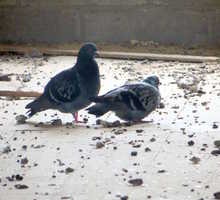
by Pigeon Patrol | Jul 6, 2023 | 4-S Gel Bird repellent, Animal Deterrent Products, Bird Deterrent Products, Bird Law, Bird Netting, Bird Spikes
First, you need to buy a pigeon trap. There are many models on the market, but most are basically large cages, with one-way entry doors.
Next, you need to set the trap in the area with the problem pigeons. You might want to wire the doors of the trap open for a few days, and set bait – cracked corn works great – in the center of the trap, and get the pigeons acclimated to feeding in the trap. Once they are used to entering the trap for the bait, you can set the trap for real. Pro Tip: Once a first pigeon enters, more will follow.
What do you do with the pigeons once you’ve trapped them? Well, you may have heard that pigeons are moderately competent at finding their way back home. Like, over oceans and stuff. They can see magnetic fields or something. So you can’t relocate them. That means you have to kill them, if you want to stop them from coming back.
Overall, it’s my opinion that pigeon exclusion methods, using spikes, electric track, or preventative netting, are the best ways to keep pigeons away for good. Far better than trapping.
Some people love to keep pigeons because they are smart, beautiful and in some cases even profitable. People will keep pigeons in pigeon coops and pigeon farms. You may not know it, but there are pigeon race competitions where people will release a pigeon away from their home and count the time it takes for the pigeon to return. Restaurants are serving pigeon as a delicacy and farms that raise pigeons are now making more and more money.
When these birds aren’t raised for pets they can become quite the nuisance, leaving droppings everywhere and causing damage to buildings. In this case they are no longer the source to relieve some stress; these pigeons are, in fact the cause of your stress. Because of this you may be looking for tips on how to trap them and if you are, you have come to the right place.
Live Traps
If you have a new pigeon problem, meaning that it started a month or two ago then you can use live traps as a way to trap the pigeons. These birds are very smart and that is why they have been trained and used by humans in many different situations from war time to the pigeon races. Because of this level of intelligence you must know what you are doing with a pigeon cage. The right bait is absolutely necessary and you can check when you purchase the cage what the best bait is. You also have to make sure that you conceal the cage to make sure that the bird does not mind going inside. Some of the best bait includes seeds that you may have purchased at your local supermarket. There is no need to get fancy when trapping pigeons.
Get Them Used to You
You will never trap the pigeons if they have no reason to come to you or into your trap. Fortunately that can be done by using corn every day. All that you have to do is get some corn and spread in the area where pigeons usually gather. When pigeons get used to the idea of getting food without actually having to hunt it or scavenge it they will keep coming back for more. Once you have them in the location every day, you want to put some of that same corn inside the cage. Now keep in mind that pigeons are fast, so you should get a trap that’s specifically designed for them. Getting another one could actually hurt the bird. These traps can be purchased at home and gardening stores everywhere and they are not harmful to the pigeons. It’s important to remove animals humanely in every situation possible.
They Will Keep Coming Back
Unless the pigeons have just found your place there is a very good chance that they will keep coming back. As mentioned before, some people make a living with pigeon races, which consists of releasing the bird and letting it find its roost. This means in addition to trapping and releasing the birds you will also need to consider what you will do to prevent them from making a roost out of your home a second time. There are many different deterrent options for pigeons. There are fences, netting and stakes that are safe and meant to keep the birds from being able to comfortably land. You will want to have a plan that uses a combination of trapping and deterrents to keep your home pigeon free.

Pigeon Trapping: How to Trap a Pigeon – Homeowners go looking for pigeon traps mostly after their pigeon problem refuses to go away with repellent interventions. Those birds just don’t know when they have overstayed their welcome and they beat the repellents every time because they’re so intelligent. For trapping, you may choose to go with either lethal or live traps.
Lethal traps
Lethal traps kills the pigeon as soon as it enters into the cage by means of a snapping or constricting mechanism. Lethal traps get rid of any pigeon captured permanently, but the intelligence of the bird is their shortcoming. When one pigeons is caught and killed, the other members of the flock will alert each other to the danger posed by the trap and none will go near it again.
The other issue with lethal trapping is that it is illegal in many areas because of its inhumane manner of getting rid of pigeons. It can also be very difficult for homeowners who are not animal control professionals, to set and use lethal traps without injuring themselves.
Live pigeon traps
The most common design of the live pigeon trap is the one-door trap. As the name suggests, it has only one door through which the pigeons enter and it is built to accommodate many birds at once. When setting this trap, know that once one pigeon enters, the others will follow. The Tomahawk Extra live pigeon trap for instance, can trap up to thirty pigeons at a time. There are also other examples like the collapsible pigeon traps. Follow the following steps to trap pigeon alive:
- Start out by getting some seed bait and spreading it out for the birds in a particular location. Repeat this over a couple of days so this eating pattern can be established for them.
- The pigeons will start returning to this spot everyday once the feeding is regular. Once this is established, get your cage ready.
- Introduce the cage trap to the location and put the seed inside it. Let them feast for another few days to gain their trust in the cage
- Set the trap to catch as many of them as possible.
As humane as live trapping seems, it is not always the best way to get rid of pigeons because after trapping and transporting them away from your abode, they are able to return to where they were captured on their own. For this reason, some people prefer to kill the birds after they’ve been trapped.
What to do after live trapping pigeons
The thing about trapping pigeons is that unlike other animals, live trapping and relocation rarely work to keep them away from your home. Pigeons are known for their amazing ability to navigate their way back home (where they roost) from anywhere they are taken to. It is this ability that made them so useful for sending communication in the olden days, and even during world wars I and II. It therefore holds that they will return to their roost spot in your house if you do trap and relocate them. It then seems that the only way to get rid of them after trapping, is to kill them; or modify your building structure to deter them from their roosting spot.
You have to decide what to do with your pigeons once you trap them – kill them or set them free. Whatever you choose, do it quickly so the pigeons do not suffer for long. If it is permitted for you to kill them where you live, do so quickly and humanely – by gassing or breaking their necks with pliers.
Bait
Traps need to be baited to attract the pigeons. Foods like grains, seeds, fruits and water, which are the birds’ favourites work best in luring them. For your trap to be effective, you should put this bait out for a period of time before actually putting it in a trap, so that the birds feel safe enough to enter your cage in large numbers.
You can use a pigeon as bait for other pigeons as well. They are social birds and are likely to perch and eat where a member of their species is, so keep a pigeon inside the cage and it will lure others in.
Source
Pigeon Patrol Products & Services is the leading manufacturer and distributor or bird deterrent (control) products in Canada. Pigeon Patrol products have solved pest bird problems in industrial, commercial, and residential settings since 2000, by using safe and humane bird
deterrents with only bird and animal friendly solutions. At Pigeon Patrol, we manufacture and offer a variety of bird deterrents, ranging from Ultra-flex Bird Spikes with UV protection, Bird Netting, 4-S Bird Gel and the best Ultrasonic and audible sound devices on the market today.
Voted Best Canadian wholesaler for Bird Deterrent products ten years in a row.
Contact us at 1 877-4-NO-BIRD,(604) 585-9279 or visit our website at www.pigeonpatrol.ca
Pigeon/Pigeon Patrol / Pigeons Roosing / Vancouver Pigeon Control / Bird Spikes / Bird Control / Bird Deterrent / PIgeon Deterrent / Surrey Pigeon Control / Pest / Seagull deterrent / Vancouver Pigeon Blog / Birds Inside Home / Pigeons in the cities / Ice Pigeons / What to do about pigeons / sparrows, Damage by Sparrows, How to Keep Raccoons Away, Why Are Raccoons Considered Pests / De-fence / Pigeon Nesting / Bird Droppings / Pigeon Dropping / woodpecker control / Professional Bird Control Company / Keep The Birds Away / Birds/rats/seagull/pigeon/woodpecker/dove/sparrow/pidgeon control/pidgeon problem/pidgeon control/flying rats/pigeon problems/ bird netting/bird gel/bird spray/bird nails/bird guard
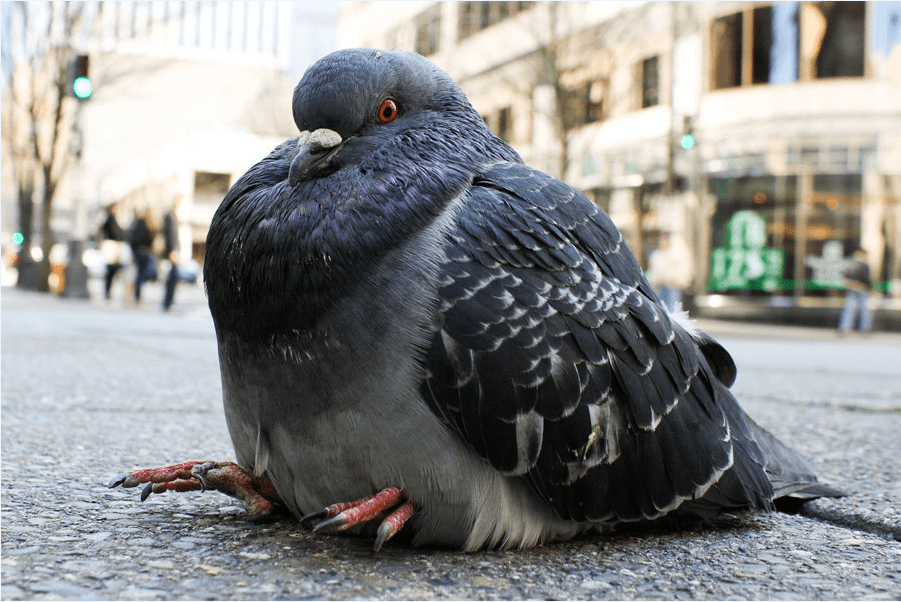
by Pigeon Patrol | Jun 30, 2023 | 4-S Gel Bird repellent, Animal Deterrent Products, Bird Deterrent Products, Bird Law, Bird Netting, Bird Spikes
Feral pigeons are the number one nuisance bird in urban areas, yet many municipalities are washing their hands of the dirty birds.
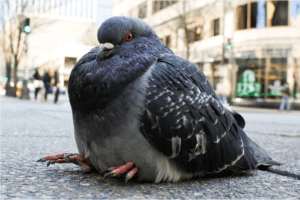
In 2013, the City of Trail, British Columbia (in the Kootenay Region of the Province’s interior) made national headlines when they scrapped a plan to relocate thousands of pigeons that plague the area to a pigeon sanctuary, only to find out that no such place exists. In the end, the city simply enacted legislation making it illegal to feed the birds and waited for them to go away.
While this sort of solution might seem appropriate to a cash strapped city council, it leaves local residents stuck with a bird problem. If you’ve got pigeons, you know how messy they can be. Their droppings cover everything underneath their resting place, and the uric acid it contains will ruin just about anything in its path. The feces can also transmit fungal, viral, and bacterial disease. They will nest in rooftop vents and air-conditioning units, causing further property damage. The long and short of the matter is that pigeons are poor roommates.
Pigeons are a year-round issue around and on homes. Roof lines provide birds with a vantage point overlooking the area surrounding your home, and most likely a regular source of food such as the neighbor’s garden. There are many other areas of the pigeons to roost such as external pipework, windowsills or worse – the chimney.
A statistic that may be the push for addressing this problem: Birds can harbor over 40 types of parasites and host internally 60 types of infectious diseases. These can be transmitted through the bird droppings found around your home.
Source
Pigeon Patrol Products & Services is the leading manufacturer and distributor or bird deterrent (control) products in Canada. Pigeon Patrol products have solved pest bird problems in industrial, commercial, and residential settings since 2000, by using safe and humane bird
deterrents with only bird and animal friendly solutions. At Pigeon Patrol, we manufacture and offer a variety of bird deterrents, ranging from Ultra-flex Bird Spikes with UV protection, Bird Netting, 4-S Bird Gel and the best Ultrasonic and audible sound devices on the market today.
Voted Best Canadian wholesaler for Bird Deterrent products ten years in a row.
Contact us at 1 877-4-NO-BIRD,(604) 585-9279 or visit our website at www.pigeonpatrol.ca
Pigeon/Pigeon Patrol / Pigeons Roosing / Vancouver Pigeon Control / Bird Spikes / Bird Control / Bird Deterrent / PIgeon Deterrent / Surrey Pigeon Control / Pest / Seagull deterrent / Vancouver Pigeon Blog / Birds Inside Home / Pigeons in the cities / Ice Pigeons / What to do about pigeons / sparrows, Damage by Sparrows, How to Keep Raccoons Away, Why Are Raccoons Considered Pests / De-fence / Pigeon Nesting / Bird Droppings / Pigeon Dropping / woodpecker control / Professional Bird Control Company / Keep The Birds Away / Birds/rats/seagull/pigeon/woodpecker/dove/sparrow/pidgeon control/pidgeon problem/pidgeon control/flying rats/pigeon problems/ bird netting/bird gel/bird spray/bird nails/bird guard











